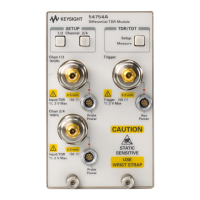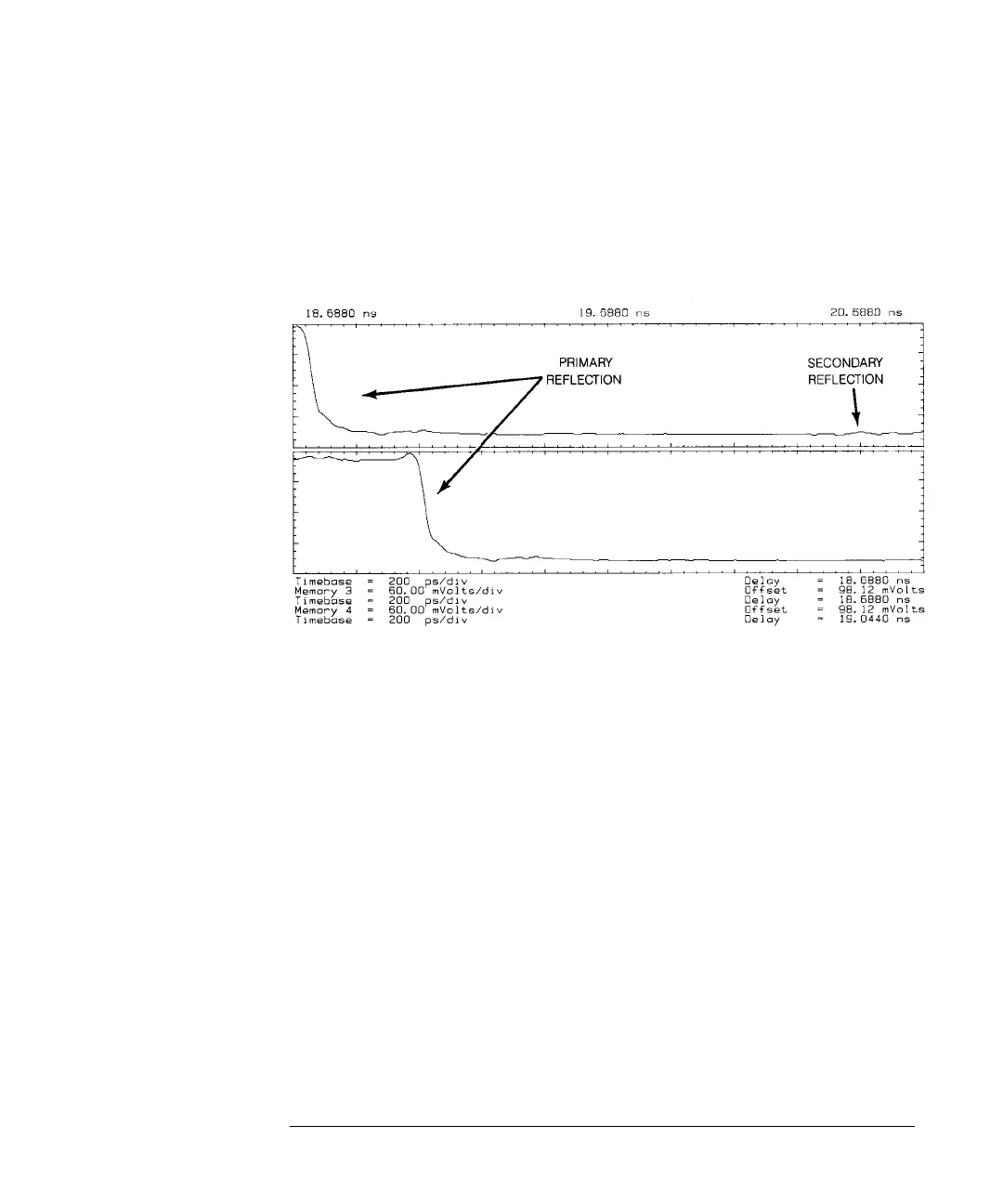Improving Time Domain Network Measurements
Removing Measurement Errors
10-16
from the measurement without losing any of the primary reflection data. In CW
TDNA, time windowing is cumbersome, thus a third normalization
measurement is used.
Figure 10-12
Decreasing delay in the bottom waveform removes the secondary reflection shown at the right end
of the baseline in the top waveform.
The Digital Filter Corrects the Measured Response
The digital filter describes how the frequency response of the test system varies
from the ideal. If the signal was passed through the filter, the result would be
the ideal response. The filter removes errors by attenuating or amplifying and
phase-shifting components of the frequency response as necessary.
Consider, for example, overshoot on the step stimulus. The frequency response
of a DUT will include unwanted response to the overshoot. During
normalization, the filter will phase-shift the frequencies responsible for the
overshoot and thus attenuate the DUT response to the overshoot. The filter
works similarly to correct for cable losses due to attenuation of high frequencies.
It compensates for cable losses by boosting high frequency components in the
DUT response back up to their proper levels.
The digital filter defines an ideal impulse response. A good basis for a
normalization filter is a four-term, frequency-domain sum of cosines window,
W(f) (see equation 2) with the appropriate coefficients.

